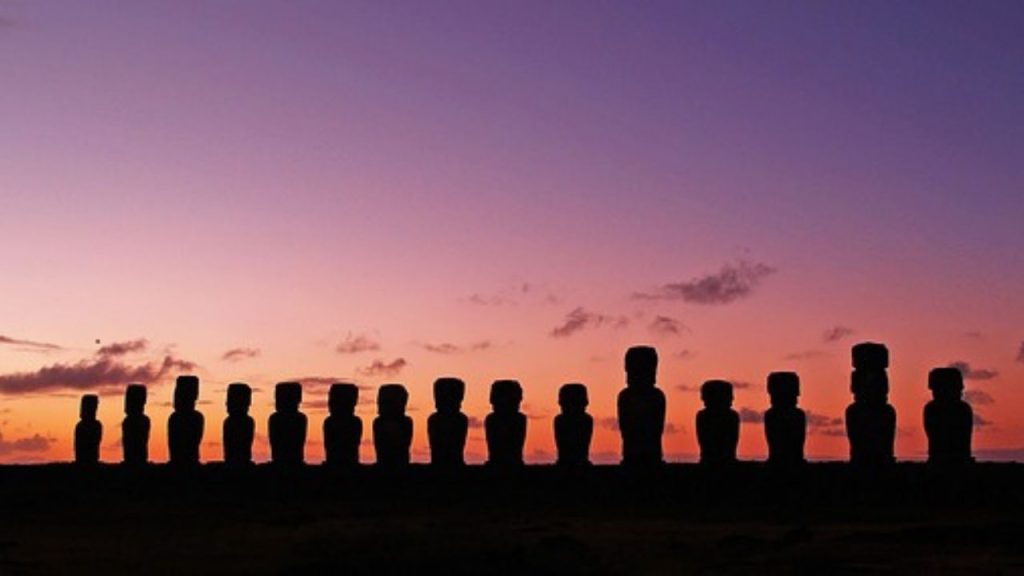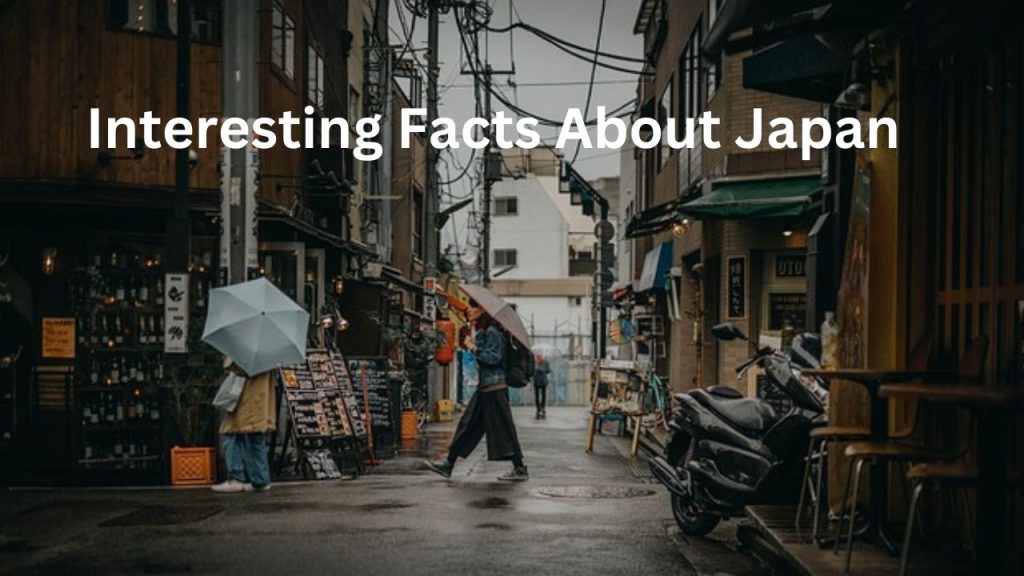Explore interesting facts about Japan, from its rich traditions and culture to modern innovations. Discover the beauty of cherry blossoms, Mount Fuji, and Japan’s fascinating history.
Japan, an archipelago of islands in East Asia, is a land full of contrasts. It’s a place where ancient traditions harmoniously coexist with cutting-edge technology, where serene temples sit next to bustling neon-lit streets, and where politeness and order are held in high regard. Whether you’re fascinated by its history, food, or modern innovations, Japan is one of the most intriguing countries on the planet. Let’s take a journey through some of the most interesting facts about this unique island nation!
Interesting Facts About Japan
1. The Land of Many Islands

Japan consists of **6,852 islands** in total, although most people are familiar with the four largest: **Honshu**, **Hokkaido**, **Kyushu**, and **Shikoku**. These four islands make up about 97% of Japan’s land area. Each has its own distinct geography, climate, and culture. For instance, the northernmost island of Hokkaido experiences cold winters with plenty of snow, making it a haven for skiing and snowboarding, while the southern island of Kyushu enjoys a warmer, more tropical climate.
2. The Japanese Language and Writing System
One thing that often amazes people about Japan is its **complex writing system**, which combines three different scripts: **Kanji**, **Hiragana**, and **Katakana**. Kanji are characters borrowed from Chinese, while Hiragana and Katakana are syllabaries—sets of written characters that represent syllables. While this may sound complicated, Japanese children spend years mastering all three, and by the time they reach adulthood, they’ve learned thousands of Kanji characters!
Japanese is also a fascinating language in its structure. It’s known for its politeness levels, where the form of verbs changes depending on how respectful or casual the speaker wants to be. This reflects Japan’s cultural emphasis on respect and social hierarchy.
3. Innumerable vending machines!

An estimated **5 million vending machines** exist in Japan, or almost one for every 23 people! These are also not your typical food and soda dispensers. Vending machines in Japan sell a variety of goods, including hot meals, fresh fruit, ice cream, flowers, umbrellas, and even batteries. Even more amazing is how easily accessible and convenient these machines are—they’re not simply located in large areas; they can be found on peaceful country roads as well.
This profusion of vending machines is indicative of Japan’s love of automation, efficiency, and convenience. Furthermore, the fact that these devices are hardly ever stolen or vandalized is evidence of the low crime rate in the nation.
4. The World’s Oldest Company
Japan is home to the **oldest company in the world**, **Kongo Gumi**, a construction company that was founded in **578 AD**. That’s over 1,400 years ago! For much of its history, the company specialized in building Buddhist temples, and it survived countless wars, natural disasters, and economic crises. Although it was absorbed into another corporation in 2006, Kongo Gumi remains a fascinating example of Japan’s historical legacy and its commitment to craftsmanship.
5. The Sacred Icon of Japan, Mount Fuji
Regarding Japan, **Mount Fuji**, the country’s highest peak, is perhaps one of the first pictures that spring to mind. Despite not erupting since 1707, Mount Fuji, which rises to a height of **3,776 meters (12,389 feet)**, is still an active volcano. It represents **Japan’s culture and spirituality** and is more than merely a mountain. Poetry, artwork, and pilgrimages have all centered on Mount Fuji over the millennia. In summer, hundreds of climbers trek the slopes of Mount Fuji, which many Japanese view as a rite of passage.
UNESCO World
Also a UNESCO World Heritage site, Mount Fuji is well-liked by photographers and environmentalists, particularly in the springtime when the peak is framed by cherry blossoms.
6. A National Obsession: Cherry Blossom Season
Speaking of cherry blossoms, one of the most exquisite and joyous periods of the year in Japan is the yearly **sakura (cherry blossom)** season. Cherry trees around the nation bloom from late March to early May, depending on the location, casting a stunning canopy of pink and white leaves. **hanami**, or “flower viewing,” is the custom of this time of year. Under the cherry blossoms, friends, family, and coworkers get together for festivities, picnics, and beverages.
The cherry blossoms’ transient beauty—they only remain for a week or two before they fall—makes the season even more unique. They represent the beauty and transience of life. It’s a period of introspection and rebirth, and it has great cultural importance for the Japanese.
7. Japanese Food: More Than Just Sushi

Although raw fish is often associated with Japanese cuisine, there is much more to this cuisine than just sushi! Rich culinary traditions that are regionally specific may be found across Japan.
Here are a few foods that are iconic:
Ramen :
A tasty soup of noodles topped with seaweed, pork, and an assortment of broths (such as miso, tonkotsu, or soy sauce).
Tempura:
Seafood and vegetables that are deep-fried and lightly battered; frequently served with dipping sauce.
– Okonomiyaki:
A tasty pancake baked with pork, fish, and cabbage, topped with a variety of sauces.
A classic multi-course dinner known as **Kaiseki** highlights the use of fresh foods, creative presentation, and harmony of flavors and textures.
In Japan, cuisine is about more than just flavor but also about presentation and the experience of eating. Every meal is carefully prepared to reflect balance and harmony.
8. Japanese Etiquette: Courtesies are Essential
When you travel to Japan, one of the first things you’ll notice is how kind and nice everyone is. **Courtesy and respect** are highly valued in Japanese society. This may be seen in commonplace actions like bowing, expressing gratitude and excuses, and abiding by social norms like taking off your shoes before entering a person’s house or a traditional inn (referred to as a **ryokan**).
In order to communicate in Japanese, one must bow. It’s an expression of appreciation, regret, and respect. It frequently occurs after the conclusion of client transactions, at business meetings, or even amongst friends.
The Japanese have a strong emphasis on **cleanliness**, which is another intriguing facet of their manners. Despite the dearth of street debris, Japanese streets are exceptionally clean. People take their trash home, and recycling is a well-organized practice. This love of cleanliness extends to their **bath culture** as well. Traditional Japanese baths, called **onsen**, are not just for washing but for relaxing and rejuvenating.
9. Cutting-Edge Technology and Ancient Traditions

Japan is known worldwide for its **technological innovations**, from futuristic robots to high-speed trains like the famous **Shinkansen** (bullet train), which can travel up to **320 km/h (199 mph)**. Japan is also a leader in robotics, with companies like **Honda** and **SoftBank** developing robots that can walk, talk, and even assist in caregiving.
However, what’s fascinating about Japan is how it balances this advanced technology with **ancient traditions**. For example, while Tokyo is filled with skyscrapers and high-tech gadgets, you can still find **traditional tea ceremonies** being performed and centuries-old temples standing in quiet corners of the city. The tea ceremony, or **chanoyu**, is a meticulously choreographed ritual that embodies the principles of simplicity, mindfulness, and respect.
10. Festivals Are Loved in Japan
Japan celebrates several **matsuri** (festivals) all year long, each with its own customs and traditions. These celebrations are frequently associated with historical occurrences, religious rituals, or seasonal shifts. Among the most well-known are: – Kyoto’s **Gion Matsuri**, which is one of the biggest and oldest celebrations, having roots in the ninth century.
– Celebrated in July, **Tanabata** is the Star Festival, honoring the story of two star-crossed lovers kept apart by the Milky Way.
– **Obon**, an annual summer celebration honoring the spirits of the departed. In order to help spirits return to the afterlife, Obon is observed by paying respects to cemeteries, cleaning headstones, and lighting lanterns.
Japan’s vibrant, exciting festivals are a must-see since they frequently feature traditional dances, fireworks, and food vendors.
11. The Japanese Work Ethic
Japan is renowned for its **strong work ethic**, and this is reflected in the concept of **karoshi**, which translates to “death by overwork.” While this may sound extreme, it underscores the dedication and discipline of Japanese workers. Many employees work long hours, often staying late to show loyalty to their company. The idea of **lifetime employment**, where workers stay with one company for their entire career, is still prevalent, although it’s gradually changing with the times.
In recent years, Japan has recognized the importance of work-life balance, and there have been efforts to promote shorter working hours and encourage employees to take more time off.
12. Manga and Animation: An International Swelling
Two exports to the globe of culture that have become hugely popular are **manga** and **anime**, both from Japan. Manga, which means comic books or graphic novels in Japanese, is the term used to describe Japanese animated TV series and movies. Adored by enthusiasts of all ages, these artistic mediums cover a broad spectrum of subjects, from romance and fantasy to action and adventure.
*Dragon Ball**, **One Piece**, and **Naruto** are some of the most well-known anime that have gone worldwide, and Japan’s animation companies, like Studio Ghibli, are renowned for producing masterpieces like Spirited Away, My Neighbor Totoro, and Princess Mononoke. Anime and manga aren’t just entertainment in Japan—they’re considered legitimate art forms and a major part of the country’s cultural identity. Many fans even travel to Japan specifically to visit Akihabara, Tokyo’s mecca for anime, manga, and gaming enthusiasts.
13. The Safest Nation on Earth?
Japan is among the world’s safest nations on a regular basis. There are very few crimes, especially violent ones, and many people feel safe strolling around the city late at night. Because of the deep-rooted sense of security in Japanese society, it is common to witness children as young as six or seven years old using public transportation or going alone to school.
Many elements contribute to Japan’s safety, such as the country’s robust feeling of community, efficient law enforcement, and cultural norms that place a premium on peace and respect for others. It shocks people that you may leave your possessions unattended at a park or café and come back to find them undisturbed, even in major cities like Tokyo.
14. Extended Life Expectancy
Japan has one of the highest rates of life expectancy worldwide. Japan has an average life expectancy of about 85 years, according to latest figures. Japan’s lifespan is sometimes credited to its superior healthcare system and healthful cuisine, which is high in fish, vegetables, and green tea. However, the Japanese way of life is equally as important as what they consume.
“Ikigai,” a Japanese notion, is frequently associated with longevity. Ikigai, or a feeling of purpose in life, is the reason one wakes up in the morning. Whether it be through their jobs, hobbies, or social activities, a large number of Japanese people—especially the elderly—remain involved and active in their communities. This feeling of direction and interpersonal relationships plays.
15. Natural Disasters & Earthquakes

Because of its location along the Pacific Ring of Fire, earthquakes are a common natural catastrophe in Japan. In actuality, there are over 1,500 earthquakes in Japan per year, most of them are small, undetectable quakes. With early warning systems in place, regular catastrophe exercises, and structures built to resist earthquakes, the Japanese government and people are very prepared for these occurrences.
Japan has demonstrated extraordinary resilience in the face of calamities, such as the Great East Japan Earthquake in 2011 that resulted in a catastrophic tsunami, despite the hazards. The perseverance and solidarity of the Japanese people are demonstrated by their spirit of reconstruction and recuperation.
16. Distinctive Cultural Customs
Many of the customs of Japan have been there for thousands of years. Among the most fascinating are:
Sumo wrestling is a distinctive, age-old martial art with ingrained customs that is regarded as Japan’s national sport. The brief yet fierce sumo bouts are accompanied by interesting customs, such the salt-throwing into the ring for purification.
Tea Ceremony (Chanoyu): Matcha, or powdered green tea, is prepared and consumed ceremoniously as part of the Japanese tea ceremony. The ceremony is a meditation practice that prioritizes awareness, calm, and beauty. It is not simply about sipping tea.
theatrical Kabuki: Kabuki is a classic Japanese theatrical style that originated in the Edo era (1603-1868). Along with its elaborate costumes, exaggerated makeup, and dramatic performances, kabuki is one of Japan’s most visually striking art forms.
17. Seasonal Occasions: The Altering Of The Seasons
Japan has four unique seasons, which are characterized by their own festivals, cuisines, and activities. The seasons include spring, summer, autumn, and winter. As an illustration:
Spring:
As previously noted, the country comes alive with festivals, picnics, and hanami gatherings during the cherry blossom (sakura) season.
Summer:
During Obon, a time to commemorate the spirits of ancestors, people celebrate with fireworks festivals and traditional Bon Odori dances.
Autumn:
Fall is a time to enjoy koyo, or the changing hues of the leaves. To appreciate the breathtaking red, orange, and yellow leaves, many people travel to the countryside or pay visits to temples.
Winter:
In areas like Hokkaido, where enormous ice crystals grow, winter brings snow festivities.
18. Japan’s Temples and Shrines
Thousands of shrines and temples may be found all across Japan, representing the two main faiths practiced there: Buddhism and Shinto. The primary religious practice of Shinto, the native religion of Japan, is the worship of kami, or natural spirits. Shinto temples may be located all around the nation, identifiable by their torii gates. Prayers for prosperity, health, and good fortune are offered at these shrines, particularly on New Year’s Day and other noteworthy events.
Buddhist temples, however, provide a quiet space for reflection. Senso-ji in Tokyo and Kinkaku-ji (Golden Pavilion) in Kyoto are two of the most well-known temples in Japan. These locations serve as both religious centers and well-liked tourist destinations because of its historical relevance and stunning architecture.
19. Japan’s Efficient Public Transportation
Japan is known for having one of the most efficient public transportation systems in the world. The Shinkansen, or bullet trains, are famous for their speed, punctuality, and safety, often arriving within seconds of their scheduled time. The Shinkansen connects major cities like Tokyo, Osaka, and Kyoto, making travel between them quick and convenient.
In addition to bullet trains, Japan’s metro and bus systems are highly reliable, and many visitors are amazed at how easy it is to navigate the country, even without speaking the language. The public transport system is also impeccably clean and safe, further reflecting Japan’s high standards for public services.
20. Japan’s Fascination with Cute Culture
Japan has a global reputation for its love of “kawaii,” or cute culture. From adorable mascots representing everything from cities to police departments, to characters like Hello Kitty and Pikachu that have taken the world by storm, Japan embraces cuteness in all forms. This fascination with kawaii is reflected in fashion, design, and even everyday items like bento boxes and stationery.
The kawaii culture isn’t just for kids—it’s embraced by people of all ages, and it reflects Japan’s creative and playful side. This aspect of Japanese culture is just another example of the country’s ability to blend tradition with modern trends.
conclusion
Japan is a country that never gets old, combining ancient customs with cutting-edge technology. Japan enthralls anyone who travel there or study there with its unspoiled natural beauty, fascinating history, contemporary marvels, and distinctive cultural idiosyncrasies. Japan has plenty to offer everyone, whether you’re interested in seeing its historic temples, taking advantage of the newest technological advancements, or just taking in the breathtaking cherry blossoms during springtime.
You will therefore find a location unlike any other if you ever get the chance to travel to the Land of the Rising Sun and spend your time getting to know all the fascinating facets of this amazing nation!




